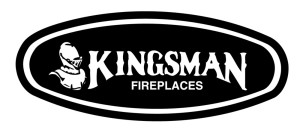Read This Before Buying or Re-arranging Fake Logs In Your Gas Fireplace
Some Tasks are Do-it-yourself. Not This One.
The internet loves to give advice. When it comes to fake logs in your gas fireplace, you should ignore and run the opposite direction from most of it. Why? Three reasons:
1) Safety – it’s your life
2) Functionality – how long do you want your fireplace to last?
3) Compatibility – round pegs don’t fit in square holes
(Note: if this video is sideways – try viewing in Chrome, or update your Firefox to the latest version. Or just turn your head to the side 🙂 )
Fake gas fireplace logs are made of ceramic or a similar material. These absorb high amounts of heat without being damaged. Without them, most of the heat from the burning gas would just escape out the vent. By retaining more heat, the ceramic provides warmth and comfort for your home. They also look nice.
But sometimes the logs fall over or have other issues, and need to be replaced or put back in position.
Let’s take a closer look at the three reasons you should never arrange your own ceramic gas fireplace logs.
1. Fireplace Safety – avoid the silent killer
This is pretty serious stuff, and we can talk about it in common language or with science, but the conclusion is the same: Incorrect or improper log placement can lead to higher levels of carbon monoxide from your fireplace.
Carbon monoxide (CO) is known as the “silent killer.” This is the gas you’ve heard about that kills people just by putting them to sleep. It has no odor, so there’s no warning unless you have a CO detector.
CO deaths are more common in winter, when storms knock out the power. Someone figures they can heat their house by bringing their barbecue inside the home. Burning the coals or the gas produces excess CO. If too much fills the house, it puts everyone to sleep, and they never wake up. It’s a tragic and totally preventable situation.
What does this have to do with fake fireplace logs?
Logs are designed by the manufacturers of each fireplace brand. They give specific recommendations for how they should be arranged so they don’t interfere with the flow of gas. The right gas flow prevents what science calls incomplete combustion. With complete combustion, you produce carbon dioxide. But with incomplete, you get CO.
So if the gas flow is interfered with too much, you are potentially producing deadly amounts of carbon monoxide.
If you go in there and place the logs yourself, just purely based on how it looks, you are unlikely to place them how the manufacturer says they should be.
Too many websites out there tell you fake logs are only for “aesthetics” – for a visually pleasing fireplace since you aren’t using any wood.
Not true. They are also there to provide heat while improving safety. Place them incorrectly, and you risk unnecessary danger.
2. Fireplace Function – save money, make it last
Another consequence of incorrect log placement is the increase in sooting. Too much soot decreases the functionality of your fireplace and shortens the life span. It clogs the gas flow, reduces the heat output, and requires more frequent cleanings than should be necessary.
If you’re paying someone to clean your fireplace (and you should be), you’ll be paying them a lot more often if your aesthetically pleasing but wrong log placement makes your fireplace get covered with soot.
Why hire an expert cleaner? Because they know all the places to clean without damaging the components and will extend its useful life.
(If you live in the Snohomish County, Monroe, Lynnwood, Kirkland, Mountlake Terrace or surrounding areas and need a fireplace cleaning and maintenance, now’s a good time to make an appointment with B&C before the winter hits).
3. Fireplace Compatibility – any ol’ set of fake logs won’t do
Underwriters Laboratories (UL) is a science safety testing nonprofit. They test and certify all sorts of products for safety and functionality, including gas fireplaces.
Their testing standards and results are based upon specific arrangements of the fake logs. This is why the manufacturers have the recommended arrangements. It’s not just for how it looks. They consider that too. But the safety and compatibility standards are based on rigorous testing by UL that presumes the logs are arranged in a certain way.
If you rearrange them how you want, you are deviating from the tested and proven standards. Any problems you face after that will likely be blamed on you if you were to try the lawsuit thing, should anything go wrong with your fireplace.
The bottom line is – logs sets are designed by each brand to fit that specific fireplace a certain way. That’s why you can’t just go buy any ol’ set of fake logs and assume they will work in your fireplace.
But What If My Ceramic Logs Keep Falling Over?
That can happen. If so, you’re best option is to have a professional come out and arrange them back in the proper way. If it’s been a while since your last cleaning and maintenance, your fireplace repair technician will probably fix the logs at no extra charge if you do it all at once.
Again, if your logs fall over, you should not use your fireplace. And you should not try to place them back the way they were. Have a professional come out and make sure it gets done according to UL standards and brand recommendations.











